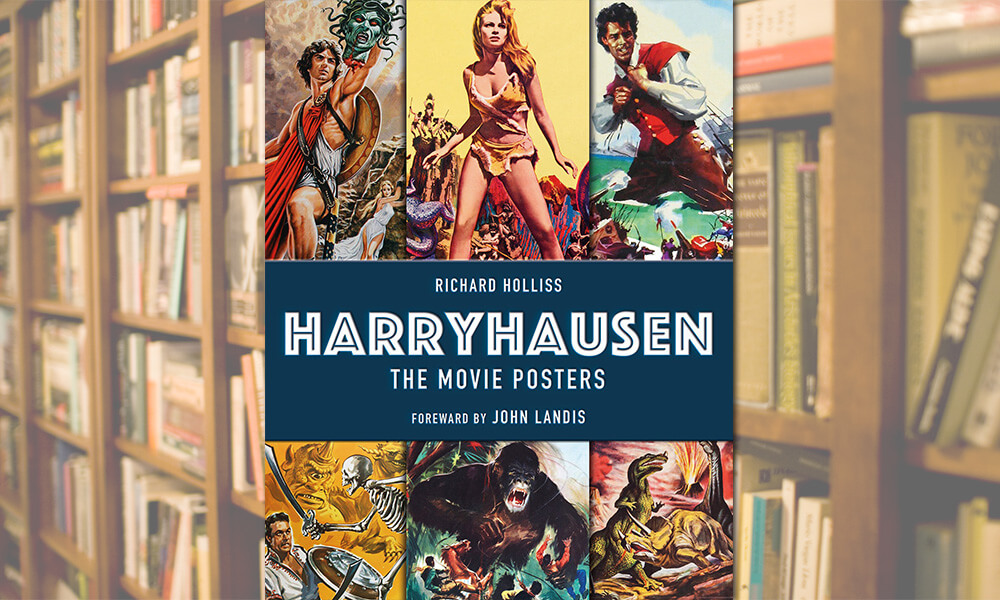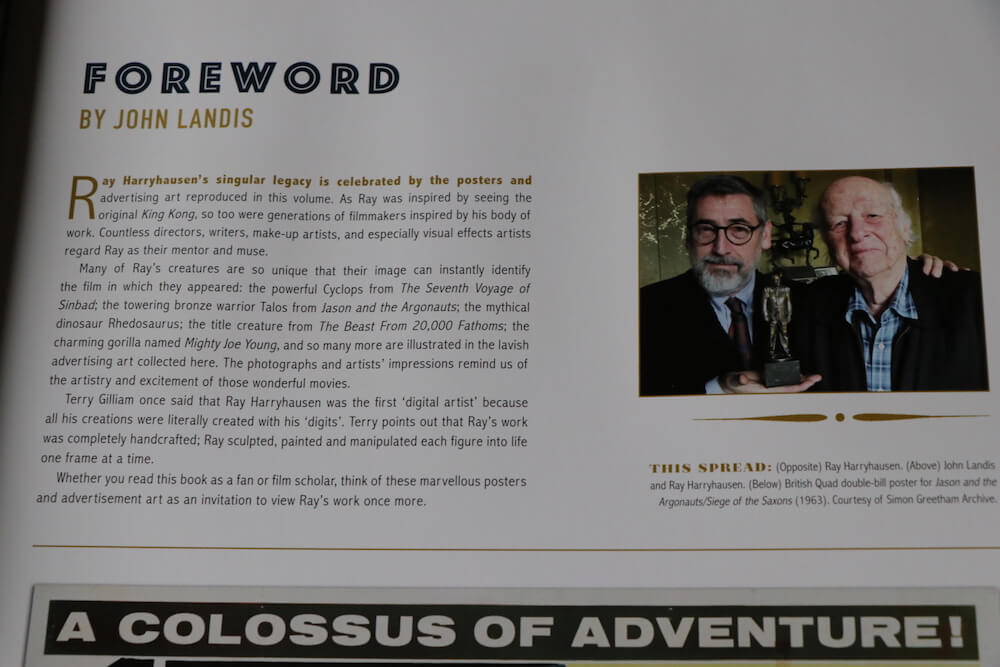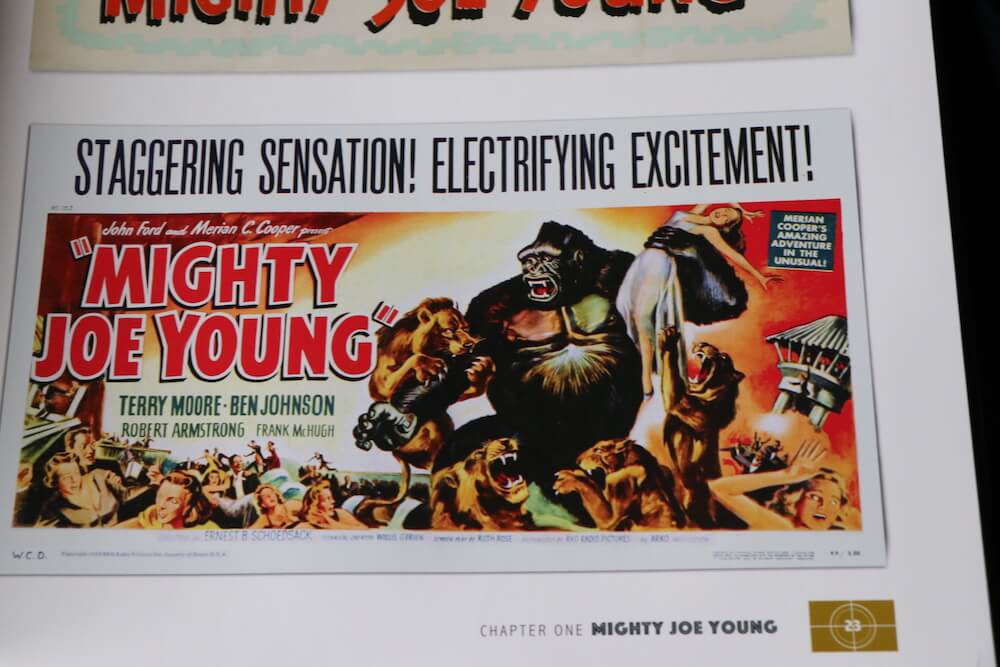Ray Harryhausen’s iconic movies are on display in the Harryhausen: The Movie Posters book from Titan Books
Ray Harryhausen is, to put it plainly, a cinema legend. His contributions to the craft of filmmaking have long been recognized for their technical achievements and industry-sculpting innovations, so it’s no surprise that media continues to showcase the artist’s talent from different angles. Titan Books recently released Harryhausen: The Movie Posters, an in-depth look at the posters and marketing artwork that advertised each of Harryhausen’s many movies, and the book is worth picking up if you’re even slightly interested in the man’s work.
I was able to get my hands on a review copy of Harryhausen: The Movie Posters, and I wanted to open its pages to give you a peek inside.
Re-introducing a visual effects legend
The book begins with a brief foreword penned by John Landis, which is a nice nod to a legend from another icon of the industry. Landis says of Harryhausen’s legacy, “As Ray was inspired by seeing the original King Kong, so too were generations of filmmakers inspired by his body of work. Countless directors, writers, make-up artists, and especially visual effects artists regard Ray as their mentor and muse.”
After the foreword, the book unfolds in a straightforward fashion. Author Richard Collins lays out each chapter to focus on a specific film from the Harryhausen timeline, providing a semi-biography of the artist during the time the movie was released and then showcasing a handful (oftentimes many more) of posters and pieces of advertising artwork that were released around the film. Personally, as a broad observation, I enjoyed seeing the different artistic styles and interpretations created and released by different countries. Most of the posters and page layouts are similar in how they’re presented, which doesn’t diminish their importance or beauty, but every now and then readers of Collins’ new book come across a poster that’s completely different than any of the others. There are only a few in the book, but it was fun to spot them sticking out from the crowd.
From Mighty Joe Young to Clash of the Titans and beyond
In his introduction, Collins reflects on the era of cinema showmanship during which Harryhausen came into his craft and the love for old artwork (posters and prints) from that era:
“Modern cinemas are no longer the grand palaces of old, with thousands of seats, lush carpeting and foyers filled with tantalising examples of good old-fashioned ballyhoo, but are instead cramped multiplexes with CinemaScope-wide confectionary counters.
Showmanship, which was once such an integral part of film marketing, has been lost. Which is probably why the film posters of yesteryear are in great demand from collectors worldwide.”
And he makes a good point, to an extent. The days of attending the movies in your finest attire may not be as prevalent as they once were, and cinemas may not hold as many attendees. That said, the rise of localized limited viewings as well as theaters filled with cosplayers for both new and nostalgic screenings makes me think we’ve entered a new era of movie-going extravagance and enjoyment. Walk into any big-city cineplex, and you’re guaranteed to find huge cardboard cutouts, posters, banners, statues, and all the little in-betweens like tie-in cups and popcorn tubs. Similarly, companies like Mondo have brought back the idea that movie posters can be works of art, so while one era dies another lives strong in a new generation of film lovers and creatives.
For Harryhausen, it was in the theater that he first found his love for movies and the behind-the-scenes magic that makes them possible. Collins takes time to explain in semi-biographical format just how Harryhausen got into the business and the part he played in creating movies like Mighty Joe Young (his first forray into stop-motion on the big screen). The book’s an engaging read for the insight into Harryhausen’s involvement in various films as well as partnerships with other talented people of the time. Pair that with countless posters, from which Collins chose the ones he showcased in the book, and you’ve got a must-own for fans and film scholars.
I’m not going to dive much deeper into the book’s content. As is almost always the case, the art books Titan Books puts out are best left discovered and flipped through at your own pace, and Harryhausen: The Movie Posters is something special. I’ve snapped photos of some of the posters that caught my eye during my reading, and I’ll include the caption that was provided by the book to let us know where each poster is from and what type (if provided) they are. Enjoy!
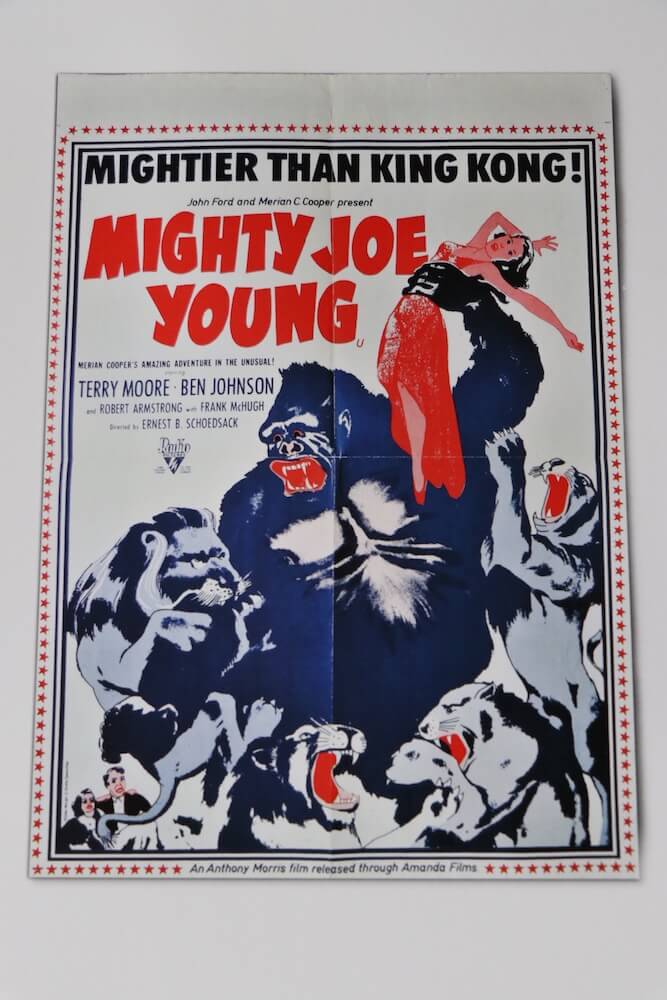
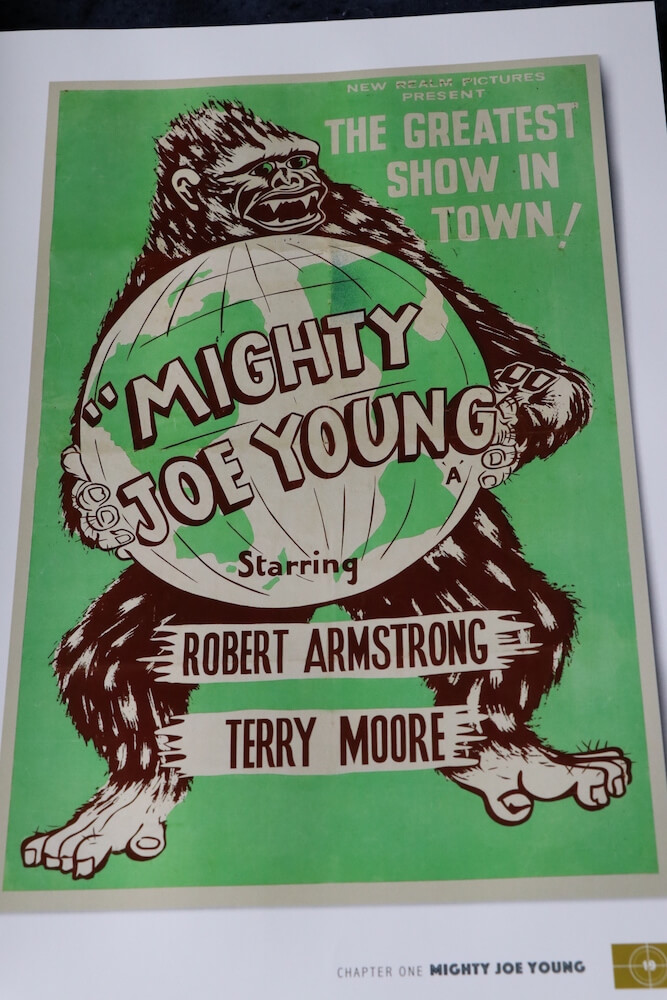
Different posters and marketing artwork from Harryhausen: The Movie Posters
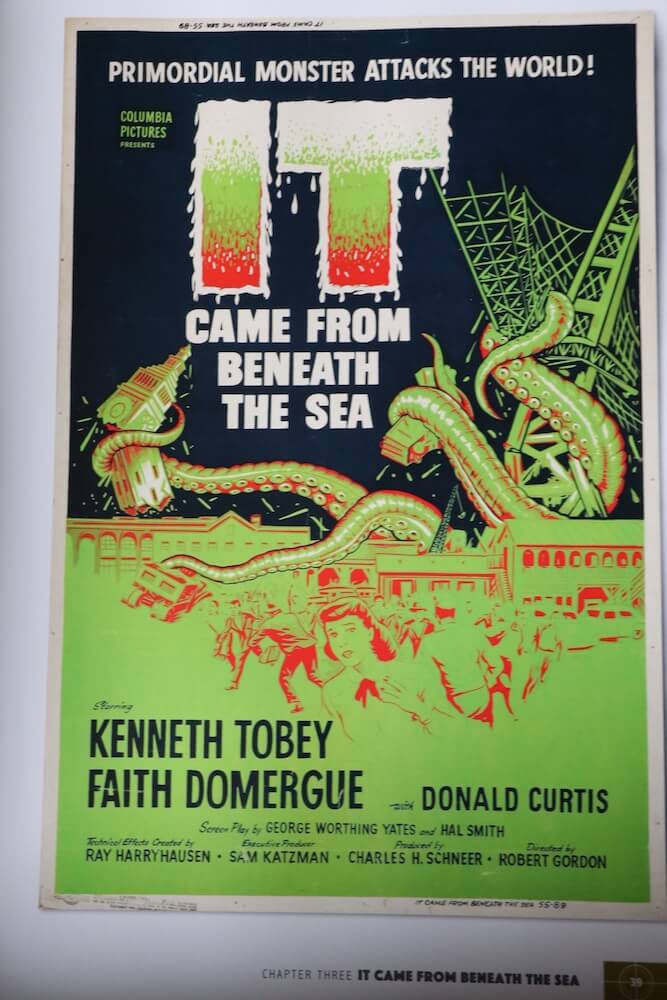

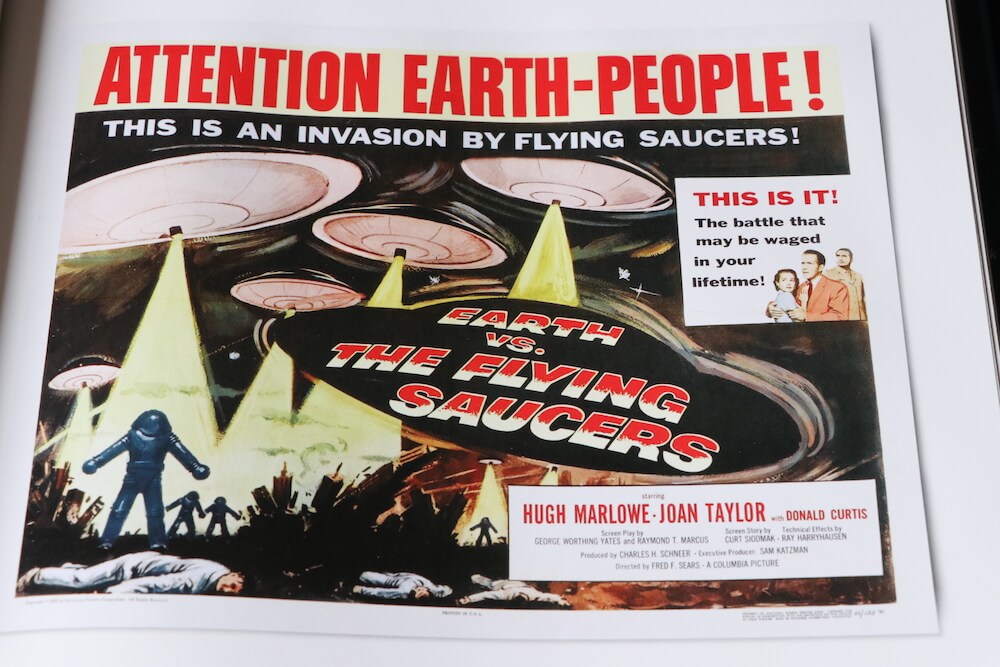
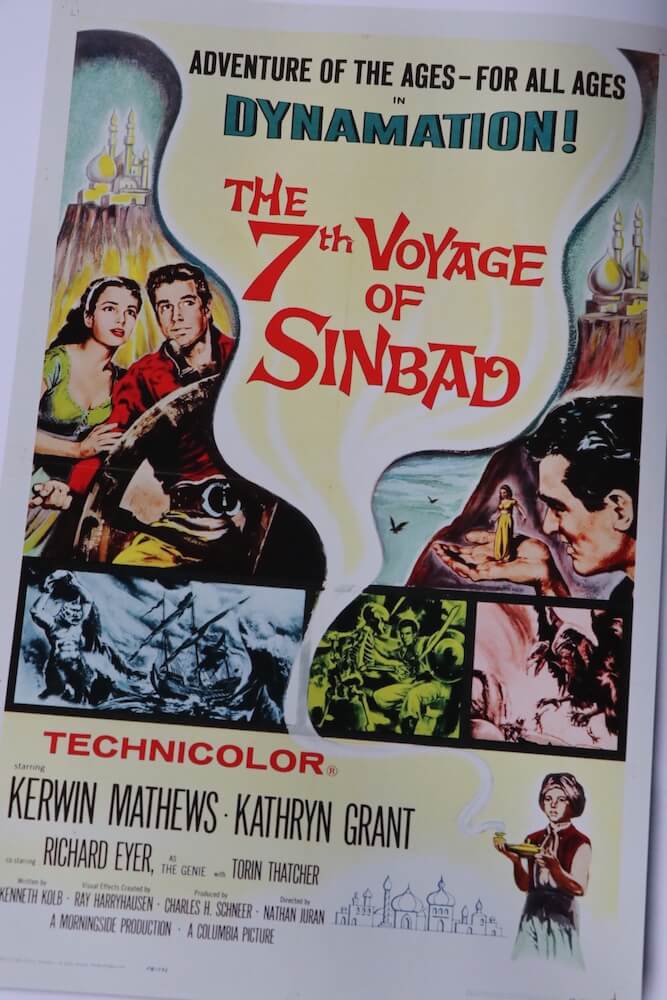
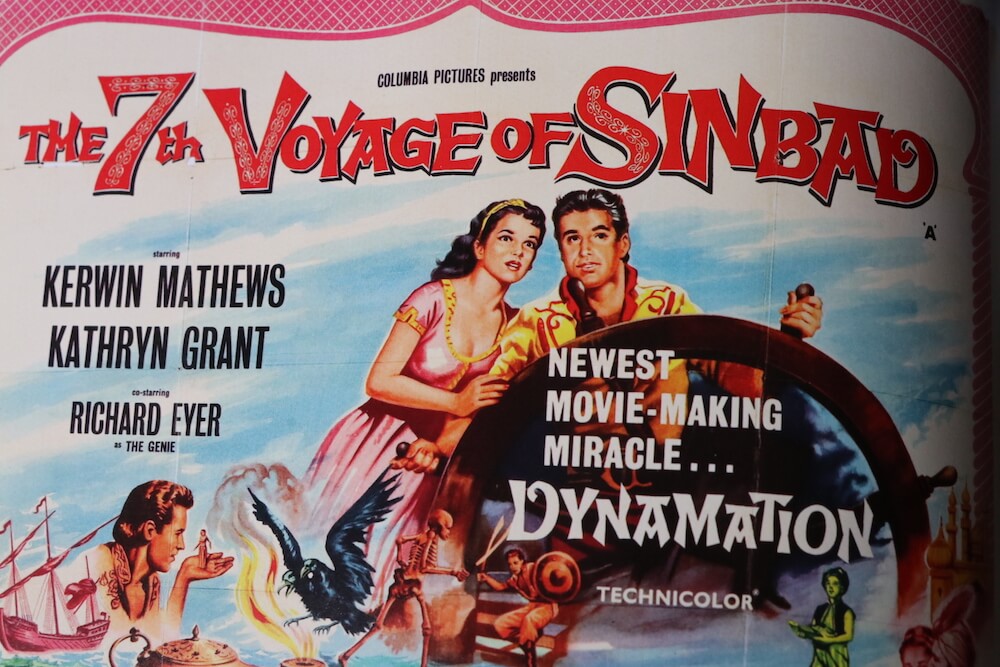
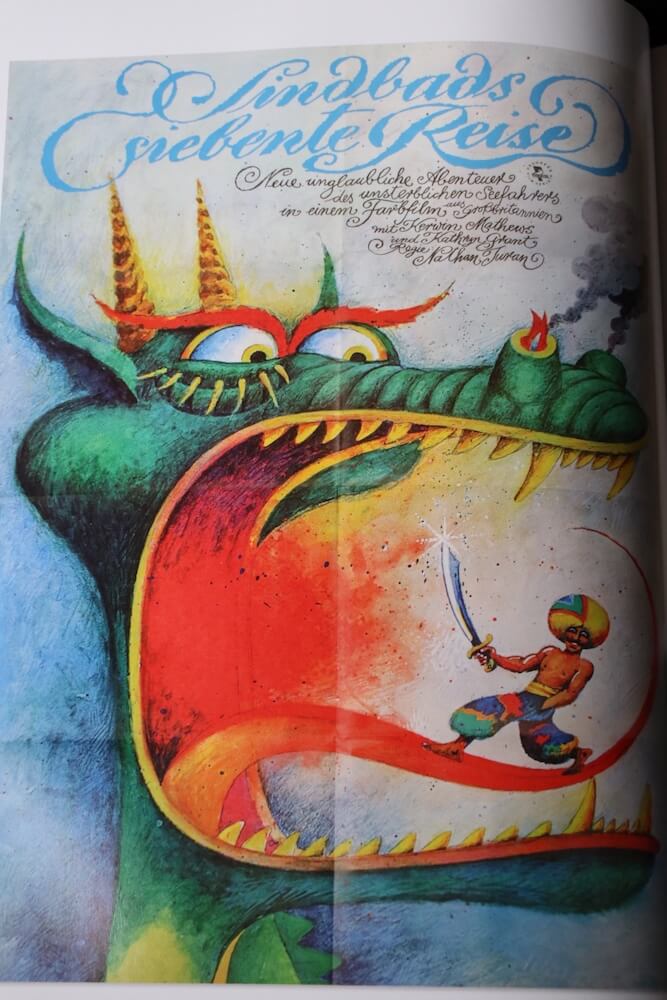
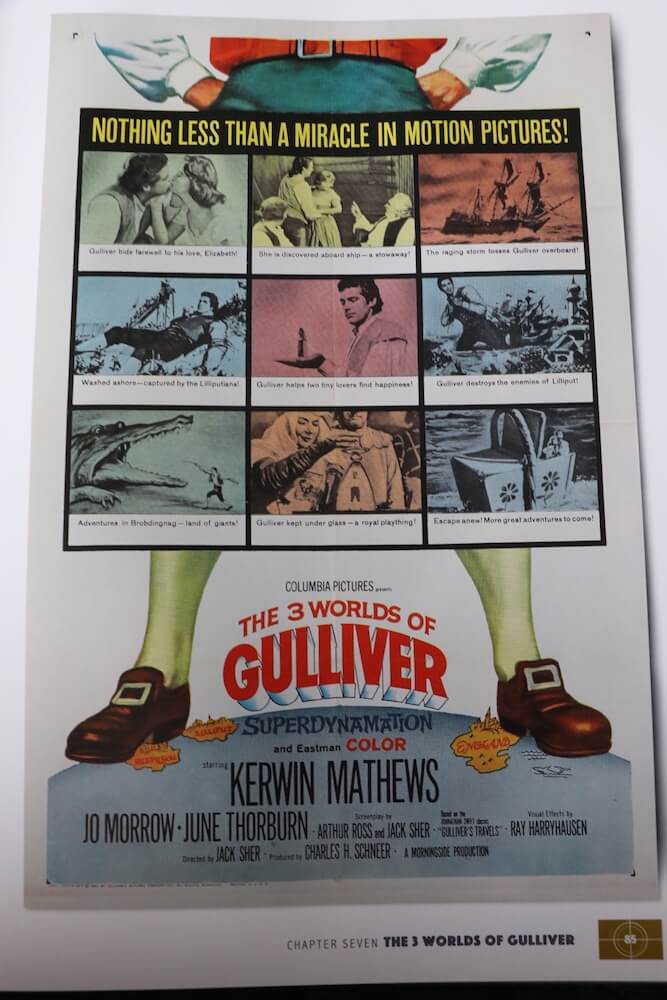
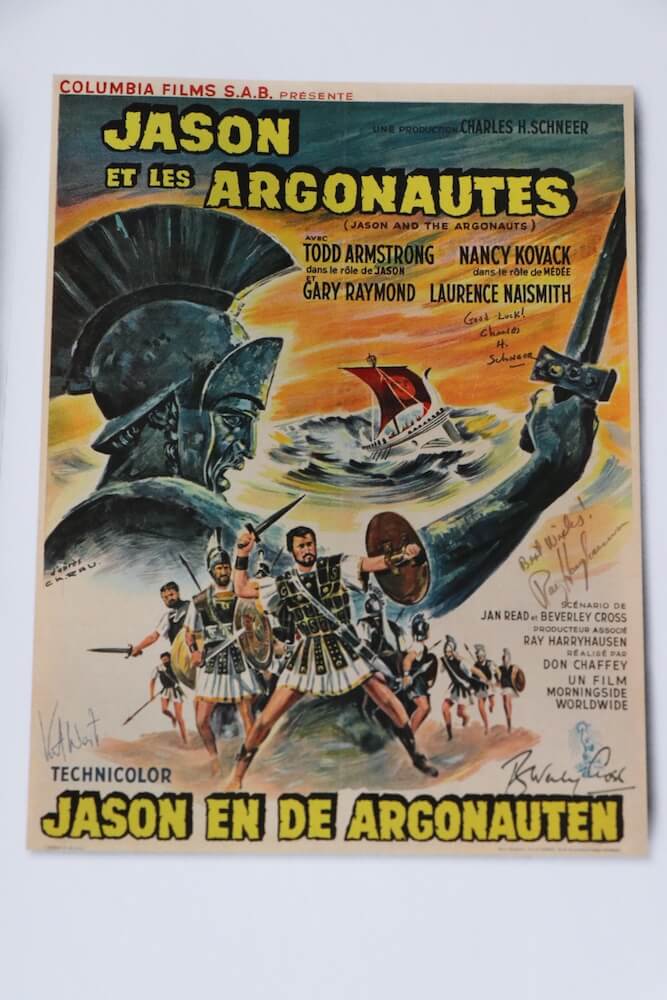
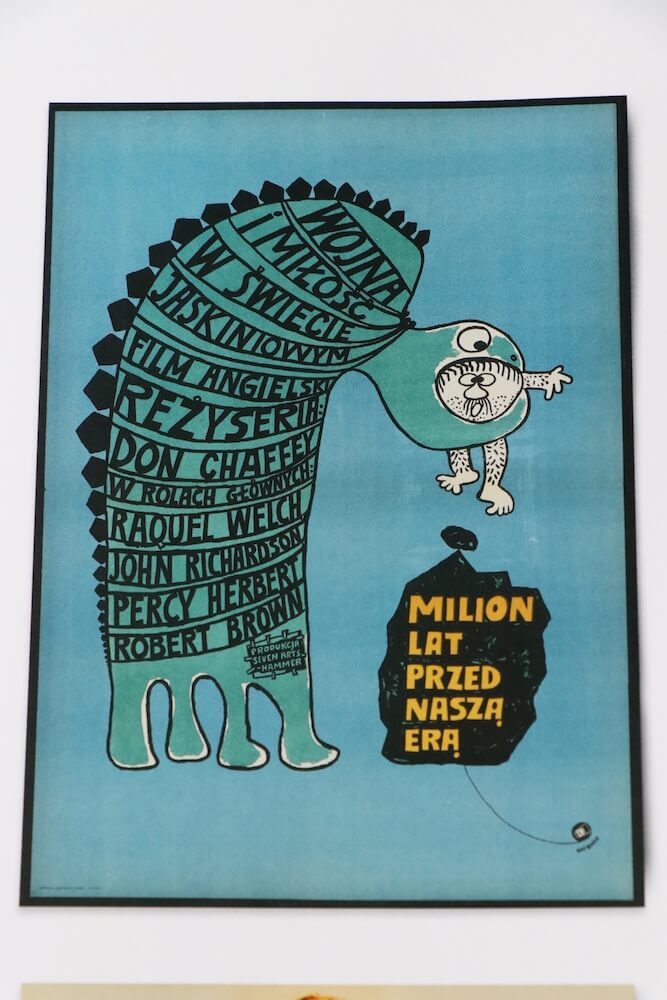
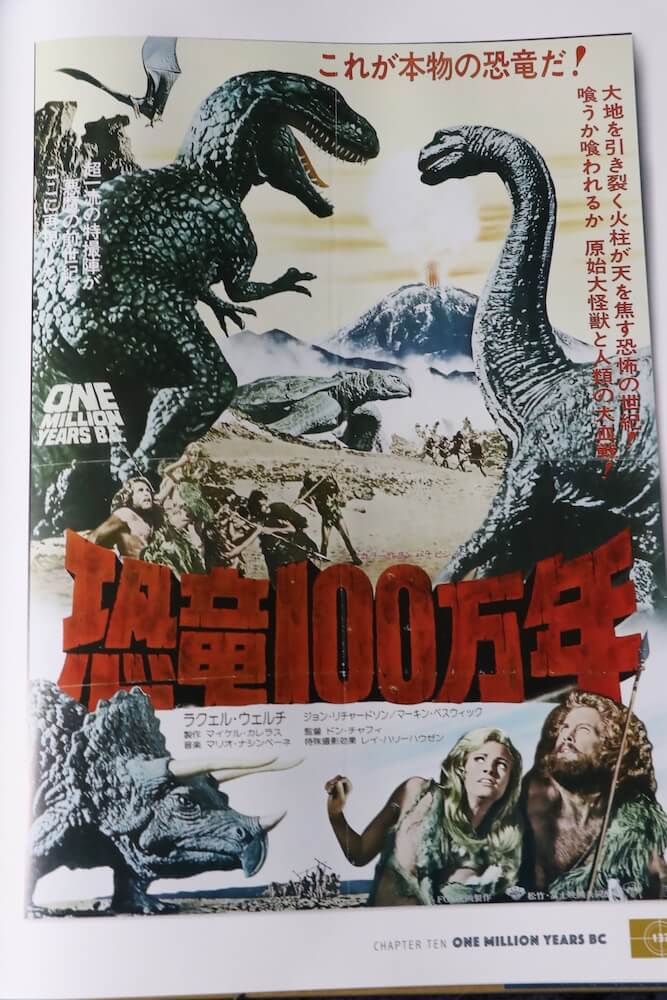
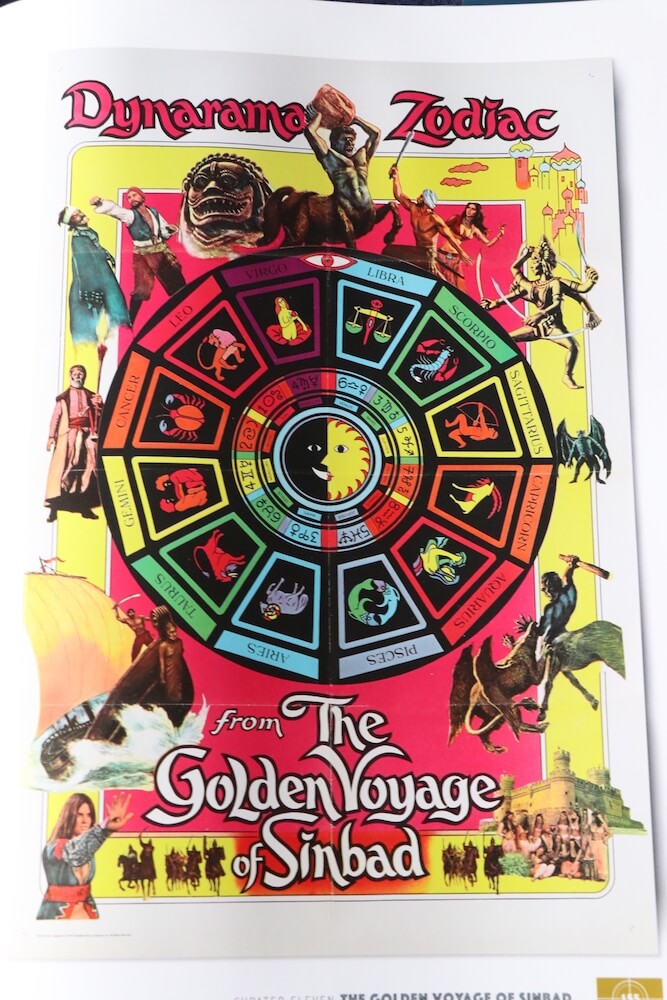
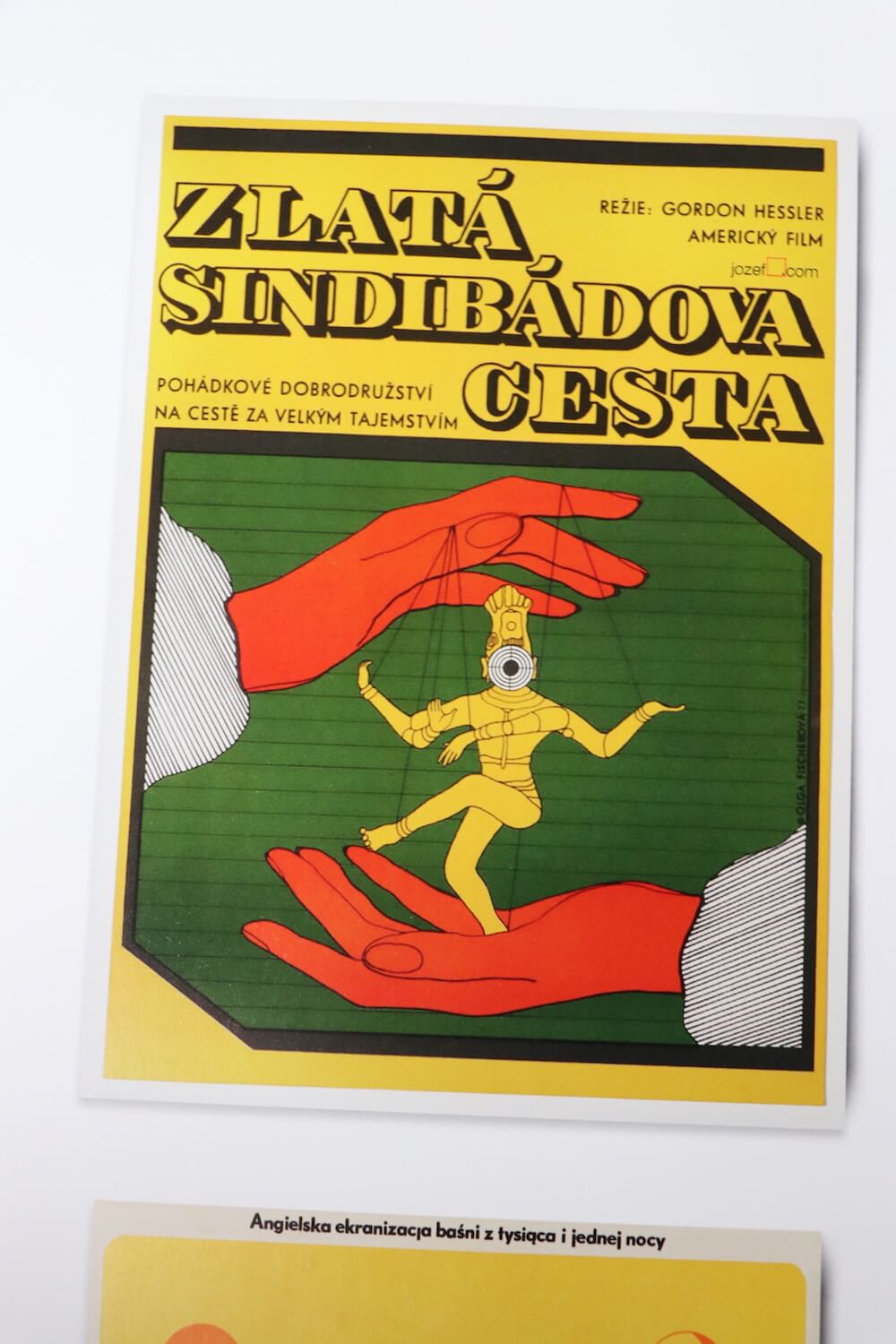
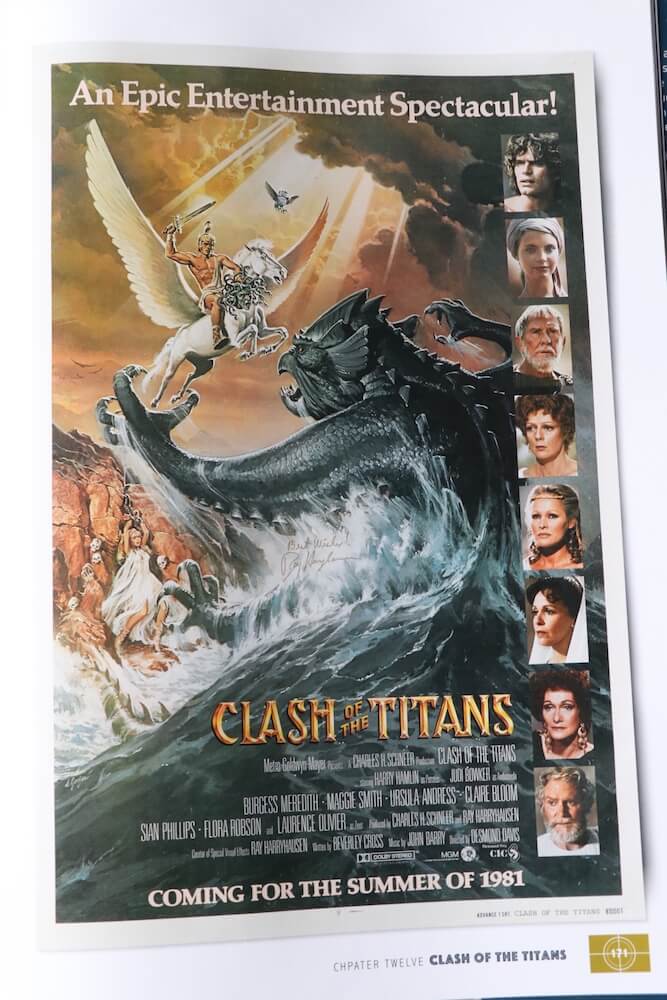
Singing his swansong and saying goodbye to the industry
Clash of the Titans (1981) would be Ray Harryhausen’s last film. The introduction of CGI essentially marked the end of stop-motion animation being the best way to create otherworldly creatures and epic fantasy adventures, and Harryhausen never felt like CGI was his cup of tea, so to speak. Collins explains in the final chapter of the book:
“Filmmakers were using computers to create a range of visual effects that a few years earlier would have been impossible. Films such as Ray’s and the bespoke creatures that he had painstakingly constructed from materials like latex and cotton could now be designed and animated using computer software.
Ray was certainly impressed by the strides made in the art of special effects cinematography, but he was also the first to admit that the new technology wasn’t for him. After decades of working in the time-consuming field of three-dimensional stop-motion animation his enthusiasm for making more films was waning.”
So, he hung up his sculpting and crafting tools, and Ray Harryhausen called it quits after decades of on-screen innovation and exploration. As Harryhausen: The Movie Posters points out, we have Ray to thank for paving the way for filmmakers like Steven Spielberg, George Lucas, James Cameron, John Landis, and Peter Jackson. Without him, others we admire and enjoy would not have followed. For that, on behalf of film fans all around the world, I say thank you, Ray Harryhausen.
If you enjoyed this sneak peek into the book and want to pick up a copy of your own, hop over to Titan Books and buy Harryhausen: The Movie Posters today!

